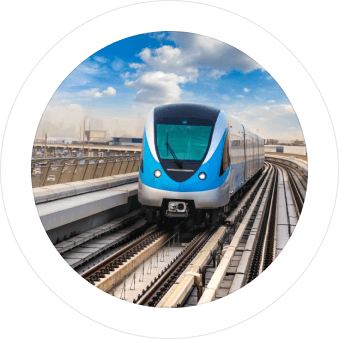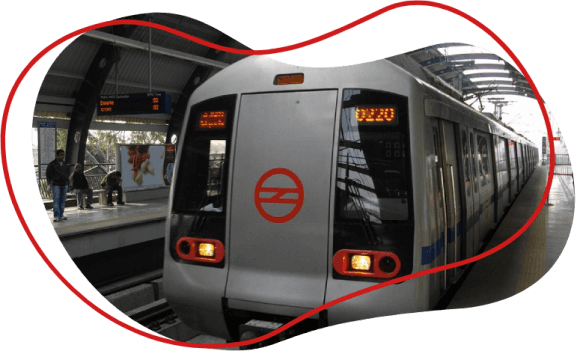Metro
A metro rail project involves the development of an urban
mass transit system using electric trains that run on
dedicated tracks, usually underground or elevated, to
provide efficient and rapid transportation within a city or
metropolitan area. Metro rail systems are known for their
capacity to move large numbers of passengers, reduce
traffic congestion, and contribute to a more sustainable and environmentally friendly transportation option. Here are the key steps involved in planning and executing a
metro rail project:

- Feasibility Study: Conduct a comprehensive feasibility study to assess the viability of the metro rail project. Evaluate factors such as demand projections, population density, existing transportation systems, potential routes, and financial viability.
- Route Planning and Design: Identify the optimal routes based on the feasibility study and conduct detailed engineering design, including track alignment, station locations, and integration with existing infrastructure.
- Environmental Impact Assessment: Perform an environmental impact assessment to understand and mitigate potential environmental effects of the project. Obtain necessary environmental clearances and permits.
Budgeting and Funding:Determine the total project cost and secure funding from
various sources, including government budgets, public,private partnerships, and
international loans or grants.
Project Management and Stakeholder Engagement: Establish a dedicated project
management team and engage with stakeholders, including government agencies,
local communities, and affected businesses.

- The Metro Rail System would provide the commuters a fast, convenient, safer, comfortable, efficient and reliable, pollution free and eco friendly transport. This would enable the city achieve a sustainable growth from the social, economic and environmental perspectives.
- Rapid transit, a passenger railway in an urban area with high capacity and frequency. The public transport operator of city or metropolitan area. The transport authority of city or metropolitan area. The urban rail transit system of a city or metropolitan area.
- Bprocurement of Equipment and Services: Source the necessary rolling stock (trains), signaling systems, track components, and other equipment. Contract specialized firms for construction and engineering services.
- Land Acquisition and Right-of-Way: Acquire the required land and right-of-way for the metro rail alignment and station construction.
- Construction: Commence construction of underground tunnels, elevated viaducts, stations, and other infrastructure elements as per the approved design.
- Electrification and System Integration: Install the electrification system to power the trains, as well as the signaling, communication, and control systems to ensure safe and efficient operation.
- Testing and Commissioning: Conduct rigorous testing of trains, systems, and safety mechanisms. Obtain necessary certifications and approvals from regulatory authorities.
